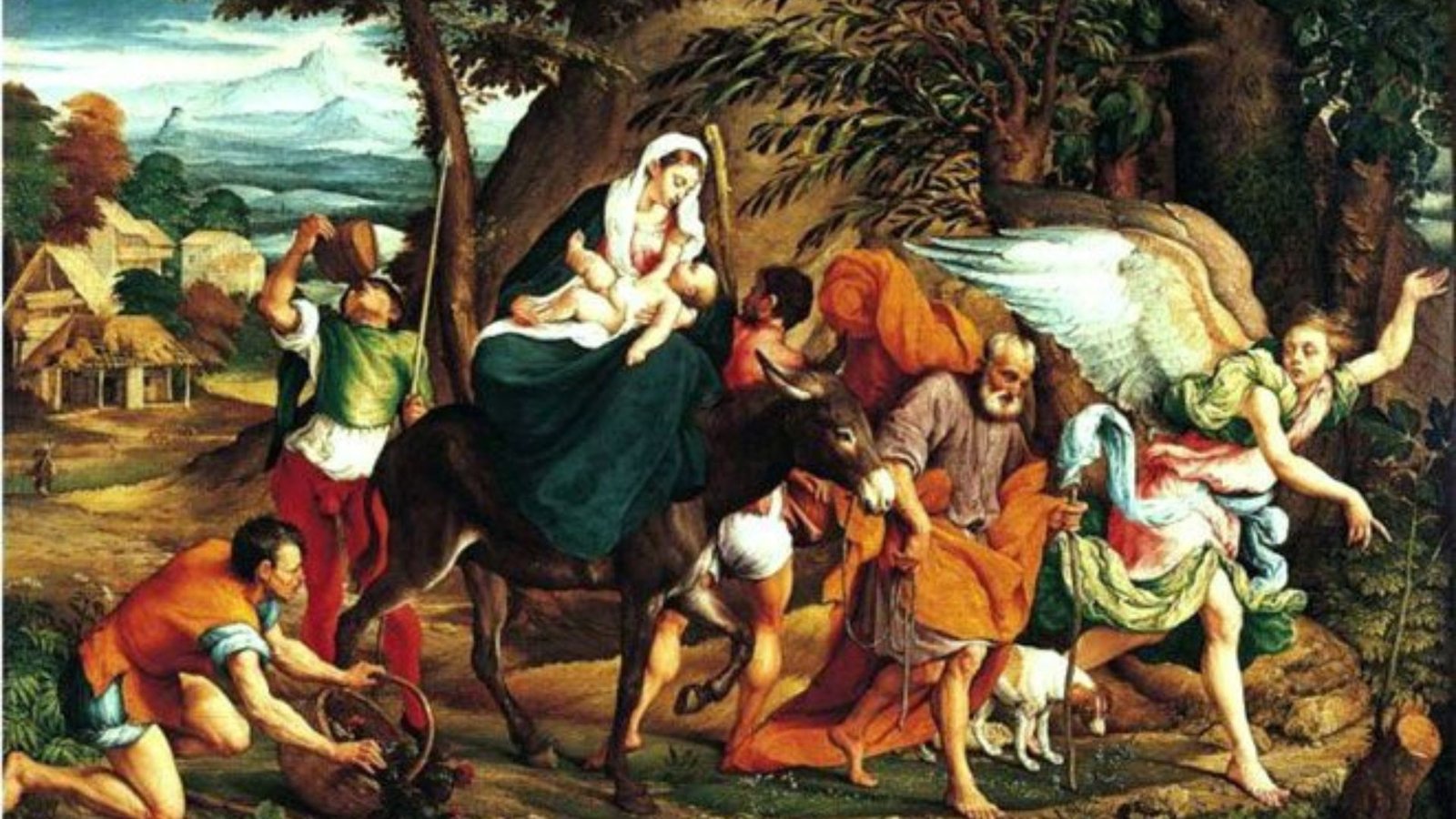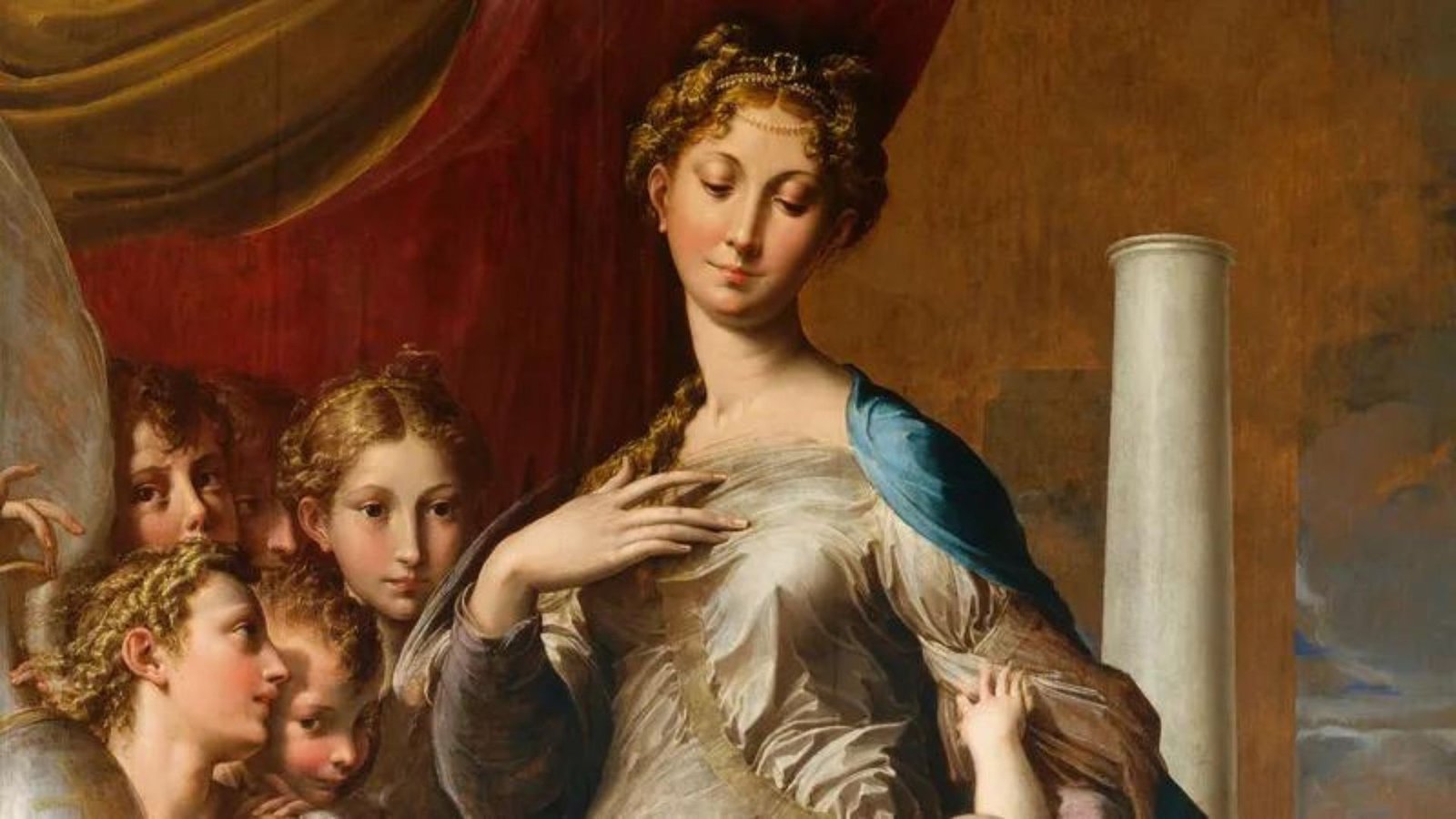|
Getting your Trinity Audio player ready...
|
Mannerism Art is a rebellious art movement between Renaissance and Baroque, known for elongated figures, drama, and artistic skill. Mannerism, an artistic movement flourishing between the High Renaissance and the Baroque period (1520s-1620s), was a period of artistic rebellion and exploration. While building upon the technical brilliance of the Renaissance, Mannerist artists deviated from its ideals of realism and harmony, forging a distinct visual language. This blog post delves into some of the key themes of Mannerist art.

Some of the Themes of Mannerist Art
Artificiality and Artifice
Unlike their Renaissance counterparts who strived for naturalism, Mannerist artists embraced a sense of artificiality. This is evident in their elongated figures with exaggerated features, often posed in contorted and serpentine (snake-like) postures. These deliberate distortions aimed to convey a sense of drama, tension, and intellectual complexity rather than strict anatomical accuracy. The use of unnatural lighting and colour further emphasized this artificiality. Additionally, it creates a sense of theatricality and a departure from the harmonious compositions favoured in the Renaissance.
This is evident in several ways:
-
Elongated figures
Human figures are often portrayed with unrealistically long limbs, small heads, and contorted postures. These distortions were not meant to represent physical reality but rather to evoke drama, tension, and intellectual complexity.
-
Unnaturalistic lighting and colour
Harsh contrasts, unusual lighting effects, and vivid or even jarring colour palettes were used to create a sense of theatricality. Furthermore, they were used to move away from the harmonious colour schemes of the Renaissance.
Intellectualism and Artistry
Mannerism celebrated the artist’s intellect and creativity above pure imitation of nature. Artists revelled in displaying their mastery of complex compositions, intricate details, and technical virtuosity. This emphasis on technical skill is evident in the intricate perspective systems, layered compositions, and precise rendering of details, like clothing fabrics or architectural elements.
This can be seen in:
-
Intricate compositions
Artists experimented with complex and dynamic compositions, often characterized by asymmetry, diagonal lines, and unexpected perspectives.
-
Technical virtuosity
Artists showcased their mastery through meticulous details, intricate rendering of textures and fabrics, and flawless use of perspective and light effects.
The Uneasy and the Ambiguous
Mannerist works often evoke a sense of unease and ambiguity. The distorted figures, unsettling colours, and illogical spatial arrangements all contribute to a feeling of discomfort and mystery. This intentional departure from the idealized representations of the High Renaissance reflected the turbulent times in which Mannerism arose, marked by religious conflict, political upheaval, and the questioning of traditional values.
This is achieved through:
-
Distortion and incongruity
The deliberate use of distorted figures, illogical spatial arrangements, and unsettling colour combinations creates a sense of tension and discomfort.
-
Reflected anxieties of the era
This shift in style can be partly attributed to the turbulent times in which Mannerism arose, marked by religious conflicts, political instability, and a questioning of traditional values.
The Human Form
The human figure remained a central theme in Mannerist art, but its portrayal deviated significantly from the idealization seen in Renaissance works. As mentioned earlier, elongated figures with exaggerated features and poses became a hallmark of the style. This emphasis on distortion and individual variations reflected a move away from the idealized proportions and perfect forms of the Renaissance, suggesting a more subjective and introspective approach to representing the human experience.
While the human figure remained central, its depiction underwent a significant transformation:
-
Individuality over Idealization
Instead of idealized figures with perfect proportions, Mannerism emphasized individuality, portraying figures with distorted features, varied expressions, and diverse body types.
-
Introspection and Subjectivity
This shift suggests a move towards a more subjective and introspective approach to representing human experience.
Mythology and Allegory
Similar to Renaissance art, Mannerist artists frequently employed mythological and allegorical narratives. However, their interpretation of these themes often differed. Rather than straightforward representations of morality or heroism, Mannerist artists used these narratives to explore complex issues like the human condition, the struggle between good and evil, and the fleeting nature of beauty. Their use of allegory also allowed them to express political and social critiques in a veiled manner, navigating the complexities of their time.

